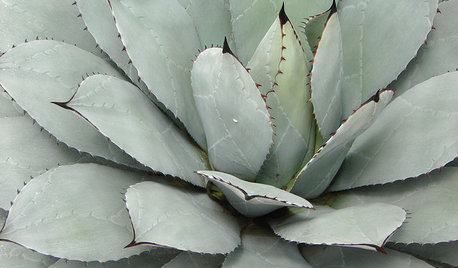Thatch beyond belief
weedyg
15 years ago
Related Stories

HOLIDAYS15 Spectacular Christmas Palettes Beyond Red and Green
Instead of dragging out holiday decorations in the same old expected colors this year, dare to consider these gorgeous alternatives
Full Story
ARCHITECTUREDesign Workshop: Getting a Feel for Steel
Versatile and strong beyond belief, steel can create amazing expressions in homes and landscapes
Full Story
HOMES AROUND THE WORLDStorybook Cottage Gets an All-Glass Kitchen
A showstopping addition to a traditional thatched cottage houses a contemporary kitchen
Full Story
GARDENING FOR BUTTERFLIES3 Ways Native Plants Make Gardening So Much Better
You probably know about the lower maintenance. But native plants' other benefits go far beyond a little less watering and weeding
Full Story
ARCHITECTURETell a Story With Design for a More Meaningful Home
Go beyond a home's bones to find the narrative at its heart, for a more rewarding experience
Full Story
BLUE AND GRAY FOLIAGEGreat Design Plant: Parry's Agave
Don't let the spikes scare you away — this succulent is surprisingly friendly to gardeners whose landscapes lie beyond the desert
Full Story
HOUZZ TOURSMy Houzz: A Condo of Delightful Curiosities in Louisville
Gorgeous vintage finds and eclectic repurposed pieces shine in this dream renovated retirement home
Full Story
ARCHITECTURERoots of Style: Does Your House Have a Medieval Heritage?
Look to the Middle Ages to find where your home's steeply pitched roof, gables and more began
Full Story
DECORATING GUIDESSo Your Style Is: Japanese
Peaceful and pure, Japanese interior design style celebrates the ancient customs of the East
Full StorySponsored







dchall_san_antonio
bpgreen
Related Professionals
Bellflower Landscape Architects & Landscape Designers · Hayden Landscape Contractors · Middletown Landscape Contractors · Miller Place Landscape Contractors · Pleasanton Landscape Contractors · Pompano Beach Landscape Contractors · West Covina Landscape Contractors · Berkeley Driveway Installation & Maintenance · Foley Driveway Installation & Maintenance · Fair Oaks Fence Contractors · Fort Lee Fence Contractors · Huntington Beach Fence Contractors · Long Beach Fence Contractors · Rome Fence Contractors · Wilmette Fence Contractorsorganic2009
billhill
andy10917
weedygOriginal Author
weedygOriginal Author
andy10917
rdak
dchall_san_antonio
rdak
dchall_san_antonio
rdak
dchall_san_antonio